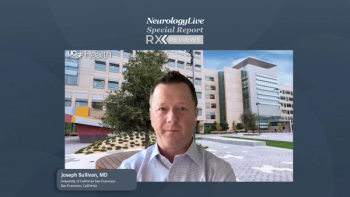Using health care utilization data and controlling for confounding by indication, environment, and genetics, findings from a recently published study of nearly 150,000 antidepressant-exposed pregnancies showed that use of these medications during pregnancy itself does not increase the risk of neurodevelopmental disorders (NDDs) in children. Although, given the strong crude associations, antidepressant exposure during this time may be an important marker for the need of early screening and intervention, the study investigators noted.1
The analysis used defined pregnancy cohorts nested in the Medicaid Analytic eXtract (MAX), which includes health care utilization data for Medicaid beneficiaries nationwide, from 2000 to 2014, and the MarketScan Commercial Claims Database, which includes private health insurance claims data, from 2003 to 2015. In total, there were 93,069 and 52,633 pregnancies with exposure to antidepressants in late pregnancy and 1,833,927 and 1,198,818 pregnancies unexposed to antidepressants in the MAX and MarketScan cohorts, respectively.
Led by Elizabeth A. Suarez, PhD, MPH, pharmacoepidemiologist, Rutgers Institute for Health, Health Care Policy and Aging Research, the study followed children from birth until outcome diagnosis, disenrollment, death, or end of study (maximum, 14 years). Neurodevelopmental outcomes included diagnoses of autism spectrum disorder (ASD), attention deficit disorder (ADHD), specific learning disorders, developmental speech/language disorder, developmental coordination disorder, intellectual disability, behavioral disorder, and any NDD (presence of any of the 7 specific disorders).
NDDs were common among children of individuals with antidepressant exposure. By age 12 years, 46.8% (95% CI, 45.6-48.1) of children in the MAX cohort and 24.9% (95% CI, 23.0-26.9) in the MarketScan cohort with antidepressant exposure had any NDD, compared with 31.4% (95% CI, 31.1-31.6) and 15.1% (95% CI, 14.7-15.4) of unexposed individuals in the same respective cohorts. ADHD represented the most common individual NDD outcome, with a 33.3% (95% CI, 32.2-34.5) and 20.3% (95% CI, 20.0-20.5) incidence rate in for those on antidepressants in MAX and MarketScan, respectively, compared with rates of 17.6% (95% CI, 15.8-19.5) and 9.6% (95% CI, 9.3-10.0) for unexposed individuals.
Becker Muscular Dystrophy Agent EDG-5506 Proves Safety, Decreases in Key Biomarkers in Early-Stage Trial
EDG-5506, an orally administered small molecule agent, showed nearly a 40% decrease in levels of serum creatine kinase in a phase 1b trial of adults with Becker muscular dystrophy.
The incidence of ASD was similarly higher in antidepressant-exposed children and publicly insured children. At 12 years, 4.1% (95% CI, 3.5-4.7) and 2.1% (95% CI, 2.0-2.1) of antidepressant-exposed children developed ASD vs 2.9% (95% CI, 2.4-3.6) and 1.6% (95% CI, 1.4-1.7) of those unexposed to treatment in the same cohorts, respectively. Crude HRs for all NDD outcomes suggested an increase in risk of NDDs, with HRs ranging from 1.32 for specific learning disorders to 2.02 for ADHD, among children exposure to antidepressants in utero compared with unexposed children. After adjusting for measured covariates and proxies for unmeasured covariates, the HRs for all NDDS were substantially attenuated, ranging from 1.01 for specific learning disorders to 1.20 for ADHD.
Sensitivity analyses for the sibling design did not suggest that carryover effects from the exposure in the first pregnancy to the outcome in the second pregnancy were present. There were several different antidepressants observed in the study, although no specific therapy resulted in meaningful increase in risk of NDD, with the possible exception of escitalopram. Comparison of escitalopram results across all outcomes evaluated revealed adjusted HRs that tended to be slightly higher than estimates for other drugs and classes. Additionally, when analyzing NDD risk based on timing of antidepressant exposure, results were similar regardless of exposure in late or early pregnancy.
REFERENCE
1.Suarez EA, Bateman BT, Hernandez-Diaz S, et al. Association of antidepressant use during pregnancy with risk of neurodevelopmental disorders in children. JAMA Intern Med. Published online October 3, 2022. doi:10.1001/jamainternmed.2022.4268




























